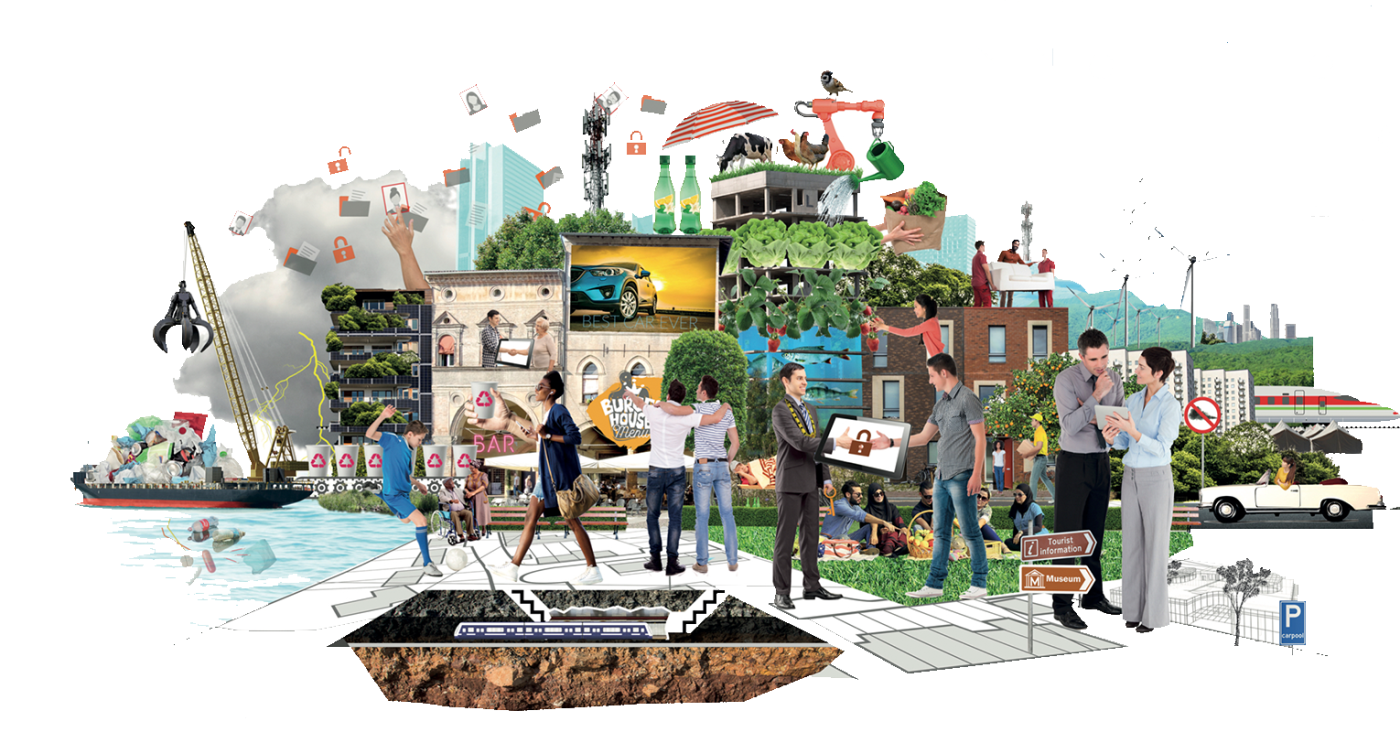Driving Urban Transitions to a Sustainable Future

As part of the preparation of the next European Research and Innovation Framework Programme – Horizon Europe – new mechanisms for public-public partnerships are under development. One of the candidates for such a European partnership is Driving Urban Transitions to a Sustainable Future (DUT). This partnership builds upon the achievements of JPI Urban Europe and aims to strengthen our joint efforts towards sustainable urban development and bringing knowledge and evidence into action.
Common vision and priorities
Our future relies on tackling complex grand challenges here and now, many of which must be addressed within cities and by urban communities. The DUT partnership aims to address these challenges with an integrated approach to offer decision makers in municipalities, companies and society the means to act and enable the necessary urban transformations.
“The DUT partnership steps up the game to tackle urban challenges. We enable local authorities and municipalities, business and citizens to make global strategies into local action. We develop the skills and tools to make urban change happen and boost the urgently needed urban transformations.”.
With this vision, the DUT partnership will contribute to the implementation and localization of the UN Agenda 2030, the Green Deal as well as the Leipzig Charter and the Urban Agenda for the EU. Building upon existing activities and experiences of Member States, municipalities and research communities, the DUT partnership will shape an urban innovation eco-system for urban transformations. The JPI Urban Europe Strategic Research and Innovation Agenda (SRIA) 2.0 identified a set of key dilemmas and wicked issues that are crucial to consider for urban transformations. Need for action has been specified around the four dilemmas: Digital transitions in urban governance, From urban resilience to robustness, Sustainable land-use & urban infrastructures and Inclusive public spaces for urban liveability
Joining forces in the DUT innovation pillars
In order to operationalise the SRIA 2.0 and support cities along their specific strategies, the partnership focuses on three prioritised sectors (and their interrelationships) along the Green Deal for sustainable urbanisation:
- 100 Positive Energy Districts and Neighbourhoods – Transforming the Urban Energy System
- The 15 Minutes City – Rethinking the Urban Mobility System and Space
- Downsizing District Doughnuts – An Integrated Approach for Urban Greening and Circularity Transitions
Each of them represents an essential area towards urban transformations and at the same time they are highly interlinked. For the partnership to maximize impact for the European and global policies, these three priority areas have to be approached in an integrated manner and with a firm commitment to urban regional and city authority capacity building in terms of ambitious policy-making and implementation.
- 100 Positive Energy Districts and Neighbourhoods – Transforming the Urban Energy System
Positive Energy Districts are energy-efficient and energy-flexible urban areas or groups of connected buildings which produce net zero greenhouse gas emissions and actively manage an annual local or regional surplus production of renewable energy. They require integration of different systems and infrastructures and interaction between buildings, the users and the regional energy, mobility and ICT systems, while securing the energy supply and a good life for all in line with social, economic and environmental sustainability. - The 15 Minutes City – Rethinking the Urban Mobility System and Space
The 15-minutes city is characterised by compact, integrated city or neighbourhood structures with a high degree of self-sufficiency and local sustainability, though tightly interlinked with adjacent neighbourhoods and integrated in an effective interregional transportation network and sustainable supply chains. A fair distribution of public spaces is required, supporting active mobility modes connected with the availability and easy accessibility of longer-distance modes. There is also the need for bundling resources by cooperation and coordination among shippers, carriers as well as users and integrating environmentally friendly transport modes, alternative vehicles and active mobility for delivering goods and services.
- Downsizing District Doughnuts – An Integrated Approach for Urban Greening and Circularity Transitions
Downsizing district doughnuts hinges on the three Rs of reduction, regeneration, redistribution in order to break the unsustainable linear economies of make-sell-waste. Increased efficiency in resource use alone comes with risks of rebound effects, hence reuse is not enough and a reduction of consumption is needed to keep within the ecological ceiling. In turn, transition pathways towards regenerative cities and urban areas are needed, in order to be active upcyclists and drive a planetary economy. As boundaries and operational limits are set, this furthers redistribution among practices and actors to foster sustainable urbanisation.
